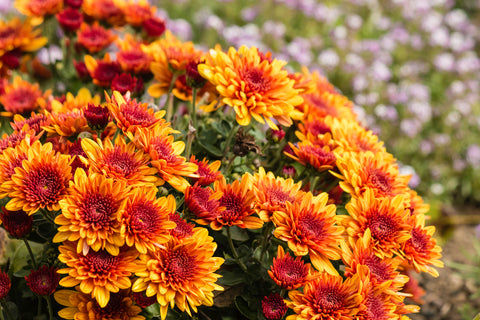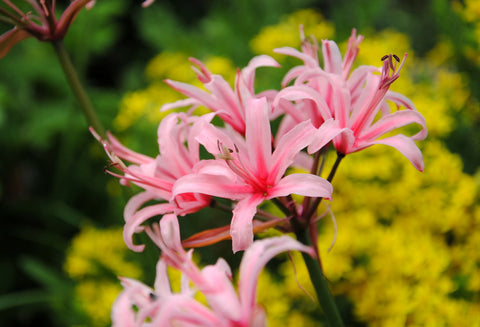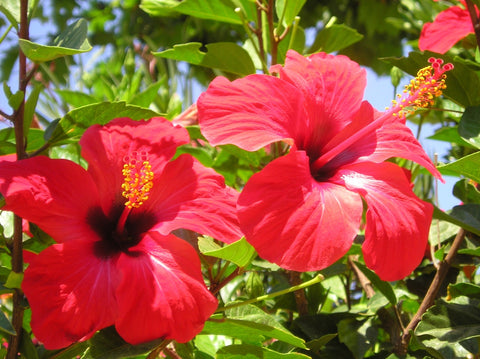Hey hey hey flower lovers, it's that magical time of year again - when the air starts to cool down, the leaves turn a gorgeous array of reds, yellows, and oranges, and everything just feels like it's bursting with life! That's right, folks - it's autumn in Australia! You heard it here first - autumn flowers are officially here, and they're putting on one heck of a show! Here at Amazing Graze Flowers, we're getting into the spirit of the season by embracing all the unique flora and fauna that this time of year has to offer! Get ready to fall in love with the gorgeous blooms that are taking over our flower shop this amazing season! Let's get into it!
Chrysanthemum

In Western cultures, chrysanthemums are often associated with the autumn season, but for our friends in the northern hemisphere, they are a popular choice for spring gardens and floral arrangements. As the weather begins to change and the flowers begin to bloom, chrysanthemums add a pop of colour and a touch of elegance to any space.
Nerines

Nerines are South African natives. known for their vibrant, trumpet-shaped blooms and their ability to thrive in dry, rocky soils. In many parts of the world, nerines are closely associated with March, and they have a long and fascinating history that is steeped in symbolism and tradition.
The nerine's association with march stems from the fact that the plant typically blooms in the late summer or early autumn over here in the southern hemisphere, nerines are symbols of beauty, grace, and resilience. This is partly due to their delicate, exotic appearance, but it is also because of the plant's remarkable ability to thrive in difficult conditions. Nerines are known for their toughness and adaptability, and they have become a symbol of hope and perseverance for many people.
In addition to their symbolic significance, nerines have a long history of use in traditional medicine. The Zulu people of South Africa, for example, have long used the plant to treat a variety of ailments, including coughs, colds, and digestive problems. The plant's roots and bulbs are particularly valued for their medicinal properties, and they are often ground into a powder and used in traditional remedies.
Today, nerines are a popular choice for gardeners and flower enthusiasts all over the world. They are prized for their striking appearance and their ability to brighten up gardens and homes with their vivid colours and graceful forms. Whether they are used as symbols of hope and resilience, or simply enjoyed for their natural beauty, nerines continue to captivate and inspire people all over the world.
Camelia

The camellia flower, also known as the Japanese rose, is a beloved flower that is native to eastern and southern Asia. Camellias were introduced to Japan in the 9th century, where they became widely popular among the aristocracy. The Japanese created many different varieties of camellia flowers, each with its unique beauty and symbolism. In Japan, camellias are considered a symbol of devotion, and it is often given as a gift to show respect and admiration.
The camellia flower is associated with the samurai warrior class, who were known for their courage and loyalty. The red camellia, in particular, is considered a symbol of bravery and honour. It is often given as a gift to warriors or to those who have shown great courage in the face of adversity.
In Western culture, camellias are most often associated with love and romance. It is said to represent a deep and abiding love, as well as the delicate beauty of the beloved. The white camellia, in particular, is often used as a symbol of purity and innocence.
Camellia flowers are also associated with the Christian holiday of Easter, which typically falls in March! In Christian symbolism, the white camellia represents the purity and innocence of the Virgin Mary, while the red camellia represents the blood of Christ.
Daisy

The daisy is a small, white, delicate flower that is often associated with March. It has a long and fascinating history, as well as a deep symbolic meaning that has resonated with the daisy and has been associated with the feminist movement, especially with international women's day taking place on march 8th the flower is particularly representative of this month, especially in the United States. In 1913, suffragettes adopted the daisy as a symbol of their fight for women's rights. The daisy was seen as a symbol of purity and innocence, and it was used as a way to counter the negative stereotypes that were often associated with women who were fighting for their rights.
the daisy is a beautiful and meaningful flower that has a rich history and deep symbolic meaning. Whether you see it as a symbol of new beginnings, true love, or good luck, the daisy is a reminder that even the smallest things can have a powerful impact on our lives.
Gordonias

Gordonias are known for their beautiful white flowers, glossy green leaves, and unique form.
Historically, gordonia was used by indigenous communities in the Americas for its medicinal properties. The plant was believed to have healing powers and was used to treat a variety of ailments, including fever, dysentery, and even snake bites.
Due to this, gordonia has become a symbol of resilience and hope in modern times. During the American Civil War, Confederate soldiers would wear a sprig of gordonia in their caps as a symbol of their determination to fight and their hope for victory. The plant was also used as a symbol of hope and resilience during the Civil Rights movement, with activists wearing gordonia as a way to show their determination to fight for equality and justice.
In addition to its historical and cultural significance, gordonia is also celebrated for its ecological importance. The plant is known for its ability to thrive in wetland areas, and its roots help to stabilize soil and prevent erosion. Gordonia also provides habitat and food for a variety of wildlife, including birds and insects.
March is a particularly important month for gordonia, as it is when the plant begins to bloom. The white flowers of gordonia are a symbol of purity and new beginnings, making them a fitting symbol for the start of the new season. The plant's resilience and ability to thrive in difficult conditions also make it a symbol of strength and perseverance.
Hibiscus

Hibiscus is an absolutely stunning flower, native to tropical regions of the world, including Africa, Asia, and the Pacific Islands, and is widely cultivated for its ornamental and medicinal properties.
In many cultures, the hibiscus flower has symbolic meaning, and it has been used in various religious and cultural practices. In some parts of Asia, the hibiscus is seen as a symbol of the goddess Kali, and it is used in religious ceremonies and offerings. In Hawaii, the hibiscus is the state flower, and it represents delicate beauty and power.
During the month of March, the hibiscus flower takes on a particular significance. In many parts of the world, including Asia and the Middle East, the hibiscus is associated with the celebration of the New Year. In Iran, for example, the hibiscus is called “Sourat” and is used in the Haft Sin, which is a traditional table setting used during the Iranian New Year celebrations, which take place on the 21st of march! The seven items placed on the Haft Sin each represent a different symbol, and the hibiscus represents beauty.
Overall, the hibiscus flower is a symbol of beauty, power, and renewal, making it a popular choice for celebrations and ceremonies. Whether used in religious practices or simply enjoyed for its beauty, the hibiscus is a beloved flower with a rich history and deep symbolism that continues to be celebrated today.
There you have it, my fellow flower fanatics - autumn in all its glory! Don't forget to head over to Amazing Graze Flowers to get your hands on some of these beautiful blooms and bring a touch of autumnal magic into your home. Whether you're looking for a bouquet to brighten up your living room or a centrepiece to wow your dinner guests, our expert florists have got you covered. So what are you waiting for? Head on over to our shop and let us help you create the perfect arrangement for your autumnal celebration!



 Continue Shopping
Continue Shopping